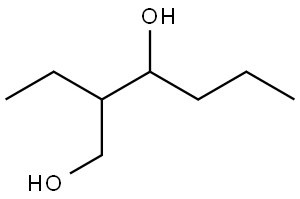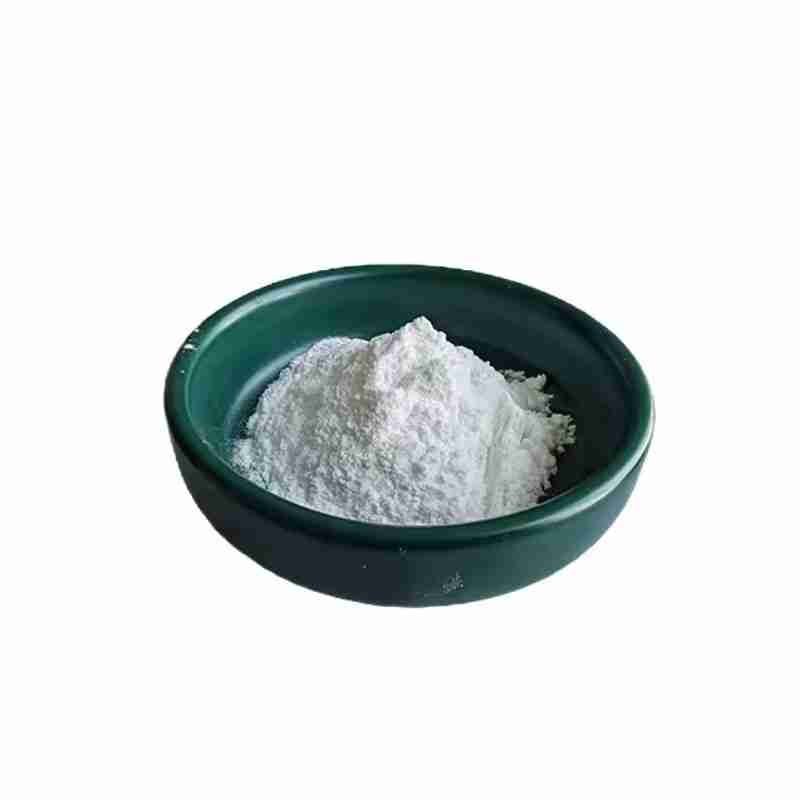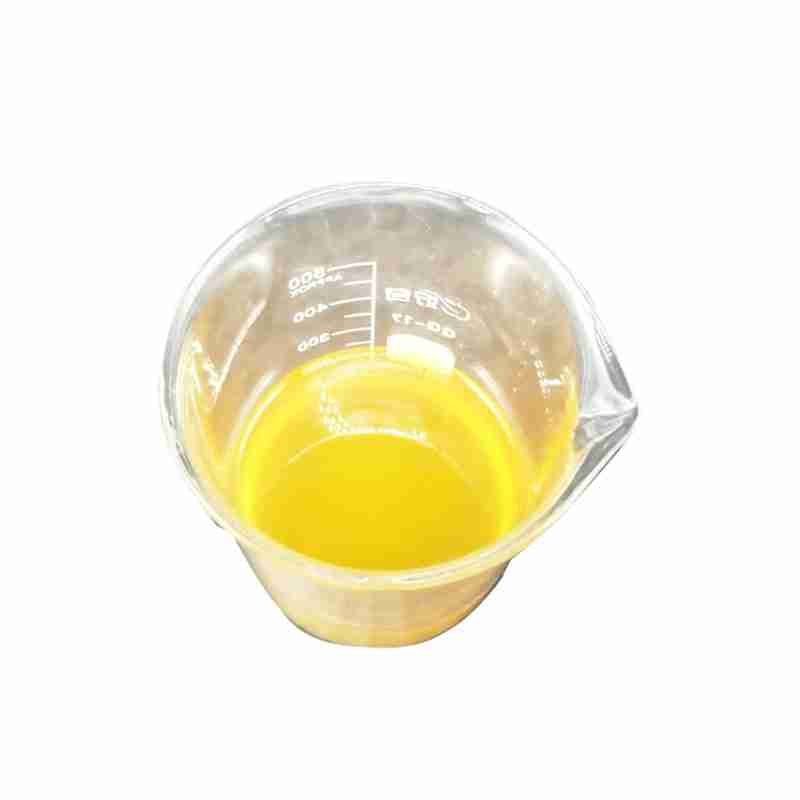2-Ethyl-1,3-hexanediol CAS #94-96-2
2-Ethyl-1,3-hexanediol is a colorless viscous liquid used as a plasticizer in the plastics and resin industry. It is also used in ink formulation to increase the permeability of ink on paper.
First, butyraldehyde is synthesized from propylene. Under the catalysis of alkali or acid, butyraldehyde self-condenses to generate 2-ethyl-3-hydroxyhexanal. This compound is very unstable and can be obtained by hydrogenation to obtain 2-ethyl-1,3-hexanediol.
发送询盘
2-Ethyl-1,3-hexanediol CAS #94-96-2
| 2-Ethyl-1,3-hexanediol Basic information |
| Product Name: | 2-Ethyl-1,3-hexanediol |
| Synonyms: | OCTYLENE GLYCOL(R);RUTGERS 612(R);2-ethyl-1,3-hexyleneglycol;2-Ethyl-2-propyl-1,3-propanediol;ETHOHEXADIOL(R);ETHOHEXADIOL(TM);2-Ethyl
hexanediol;2-ethyl-1,3-hexanediol,mixtureofisomers |
| CAS: | 94-96-2 |
| MF: | C8H18O2 |
| MW: | 146.23 |
| EINECS: | 202-377-9 |
| Product Categories: | Building Blocks;Chemical Synthesis;Organic Building Blocks;Oxygen Compounds;Polyols |
| Mol File: | 94-96-2.mol |
 |
|
| 2-Ethyl-1,3-hexanediol Chemical Properties |
| Melting point | -40 ??C (lit.) |
| Boiling point | 241-249 ??C (lit.) |
| density | 0.933 g/mL at 25 ??C (lit.) |
| vapor density | 5 (vs air) |
| vapor pressure | <0.01 hPa (20 ??C) |
| refractive index | n20/D?1.451(lit.) |
| Fp | 265???F |
| storage temp. | Store below +30??C. |
| solubility | 42g/l |
| form | Liquid |
| pka | 14.85??0.10(Predicted) |
| color | Clear |
| Odor | at 100.00?%. odorless |
| Water Solubility | 42 g/L (20 oC) |
| Sensitive | Hygroscopic |
| Merck | 14,3744 |
| BRN | 1735324 |
| Dielectric constant | 15.24 |
| LogP | 3.63 at 20?? |
| CAS DataBase Reference | 94-96-2(CAS DataBase Reference) |
| NIST Chemistry Reference | 1,3-Hexanediol, 2-ethyl-(94-96-2) |
| EPA Substance Registry System | 2-Ethyl-1,3-hexanediol (94-96-2) |
| Safety Information |
| Hazard Codes | Xi |
| Risk Statements | 41 |
| Safety Statements | 25-26-39-46 |
| WGK Germany | 1 |
| RTECS | MO2625000 |
| Autoignition Temperature | 340 ??C DIN 51794 |
| TSCA | Yes |
| HS Code | 29053980 |
| Hazardous Substances Data | 94-96-2(Hazardous Substances Data) |
| Toxicity | LD50 in male, female rats (ml/kg): 9.85, 4.92 orally (Ballantyne) |
- 2
- 2-diallylpent-4-en-1-amine
- 4
- 95-16-9
- Ammonium sulfamate
- Benzothiazole
- cas:67889-00-3ح2
- cas:83524-75-8 | pigment black 32
- cas:928836-00-4 | 2
- cas:932745-70-5 | 4
- Chemical Minerals
- Coconut diethanolamide
- Daily Chemicals
- discount
- for sale
- General pvc resin
- hexyl D-glucoside
- in stock
- Lauramidopropyl betaine
- LAURIC ACID MONOETHANOLAMIDE
- Petroleum Additives
- Plasticiser
- Ploymers
- price
- PVC
- quotation
- Raw Materal
- Remove term: Petroleum Additives Petroleum Additive
- SODIUM ETHYL 2-SULFOLAURATE
Related Products
Ethylhexyl Palmitate is a skin-conditioning ester, derived from ethylhexanol and palmitic acid, that imparts moisturization and a smooth texture to cosmetic and personal care formulations. It is valued for its emollient properties, enhancing the sensory experience of skin care products.
1-Octanol, also known as Capryl alcohol or n-Octanol, is a clear, colorless liquid with a characteristic waxy odor. It is an alcohol with eight carbon atoms in its chain, making it a part of the aliphatic alcohol family. This compound is poorly soluble in water but is miscible with ethanol, diethyl ether, and chloroform . It has a melting point of approximately -15??C and a boiling point of around 196??C . 1-Octanol is used in the production of esters, plasticizers, and as a solvent or intermediate in the synthesis of various organic compounds. It also finds application in the fragrance industry as a fixative in perfumes and can be used in the formulation of flavor and scent compositions . It is important to note that 1-Octanol is flammable and should be handled with care, storing it away from sources of ignition and heat .
Chemical Name: Ashwagandha Extract
Synonyms: Withania somnifera, ext.; Withania Somnefera Extract
CAS: 90147-43-6
Appearance: Brown
Chemical Name: 1,1,2,2-Tetrachloroethane
Other Name: Tetrachlorethane
CAS No.: 79-34-5
Molecular Formula: C2H2Cl4
Molecular Weight: 167.85
Appearance: Liquid
Chemical Name: Imazalil Sulfate
CAS No.: 58594-72-2
Molecular Formula: C14H14Cl2N2O.H2SO4
Molecular Weight: 395.26
Appearance: Solid
Silicone oil, known for its chemical designation as dimethicone or polydimethylsiloxane, is a synthetic polymer with a backbone of alternating silicon and oxygen atoms, creating a highly versatile and stable compound. It is renowned for its exceptional lubricating properties, heat resistance, and non-toxic nature, making it a staple in various industries, including cosmetics, automotive, and aerospace.
This hydrophobic, non-volatile oil is valued for its ability to provide a smooth, non-greasy feel and to form stable emulsions with other ingredients. In personal care products, silicone oil is used to impart a silky texture, reduce friction on the skin, and create a protective barrier against environmental stressors without clogging pores.
Silicone oil’s chemical inertness and resistance to oxidation contribute to its long shelf life and stability in formulations. It is also appreciated for its compatibility with a wide range of substances, allowing for the creation of multifunctional products.
In summary, silicone oil is a reliable and multifaceted ingredient, offering a combination of performance, safety, and sensory benefits. Its use in a variety of applications reflects its versatility and enduring appeal in the marketplace.
Product name:HYDROXYPROPYL GUAR HYDROXYPROPYLTRIMONIUM CHLORIDE
Purity:99%
Appearance:Light Yellow Powder
Package:Customized according to customer needs.
Sample:Available
POLY(VINYL CHLORIDE-CO-ISOBUTYL VINYL ETHER) is a copolymer that combines the properties of vinyl chloride and isobutyl vinyl ether. This polymer offers a balance of rigidity and flexibility, along with enhanced chemical resistance and durability. It is commonly used in the production of films, coatings, and adhesives due to its excellent barrier properties against gases and moisture, making it ideal for packaging and construction applications.
Benzothiazoles are a class of chemical compounds characterized by a fused benzene and thiazole ring. They exhibit a broad spectrum of applications, particularly as antioxidants in rubber and plastic industries, enhancing product longevity and performance. Additionally, benzothiazoles serve as key intermediates in the synthesis of pharmaceuticals, contributing to the development of life-saving drugs. Recognized for their stability and reactivity, these compounds are integral to advancing material science and healthcare solutions.
3,4-Ethylenedioxythiophene is a synthetic organic compound characterized by its unique structure that includes a thiophene ring with ethylenedioxy substituents at the 3 and 4 positions. This compound is known for its potential applications in the synthesis of various organic materials, including pharmaceuticals and organic electronic devices such as sensors and solar cells. Its stability and reactivity make it a versatile intermediate in the chemical industry.
Chemical Name: Ammonium Iron(II) Sulfate
Synonyms: Diammonium iron bis(sulphate); iron (ii) ammonium sulfate
CAS No.: 10045-89-3
Molecular Formula: FeH5NO4S
Molecular Weight: 170.95
Common English name: 5-iodo-2,3-dihydropyridazin-3-one
CAS No.: 825633-94-1
Molecular formula: C4H3IN2O
Molecular weight: 221.98
Sample: Available


















